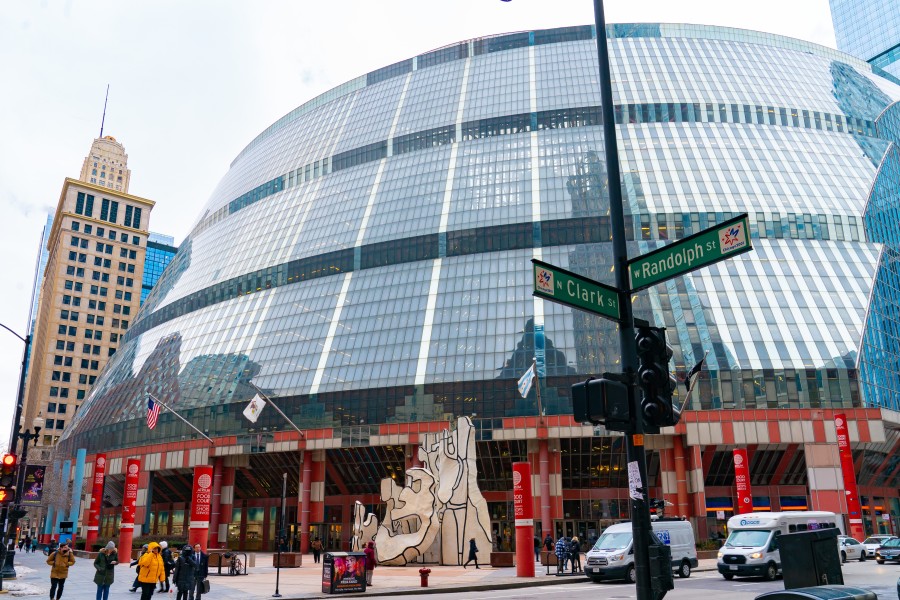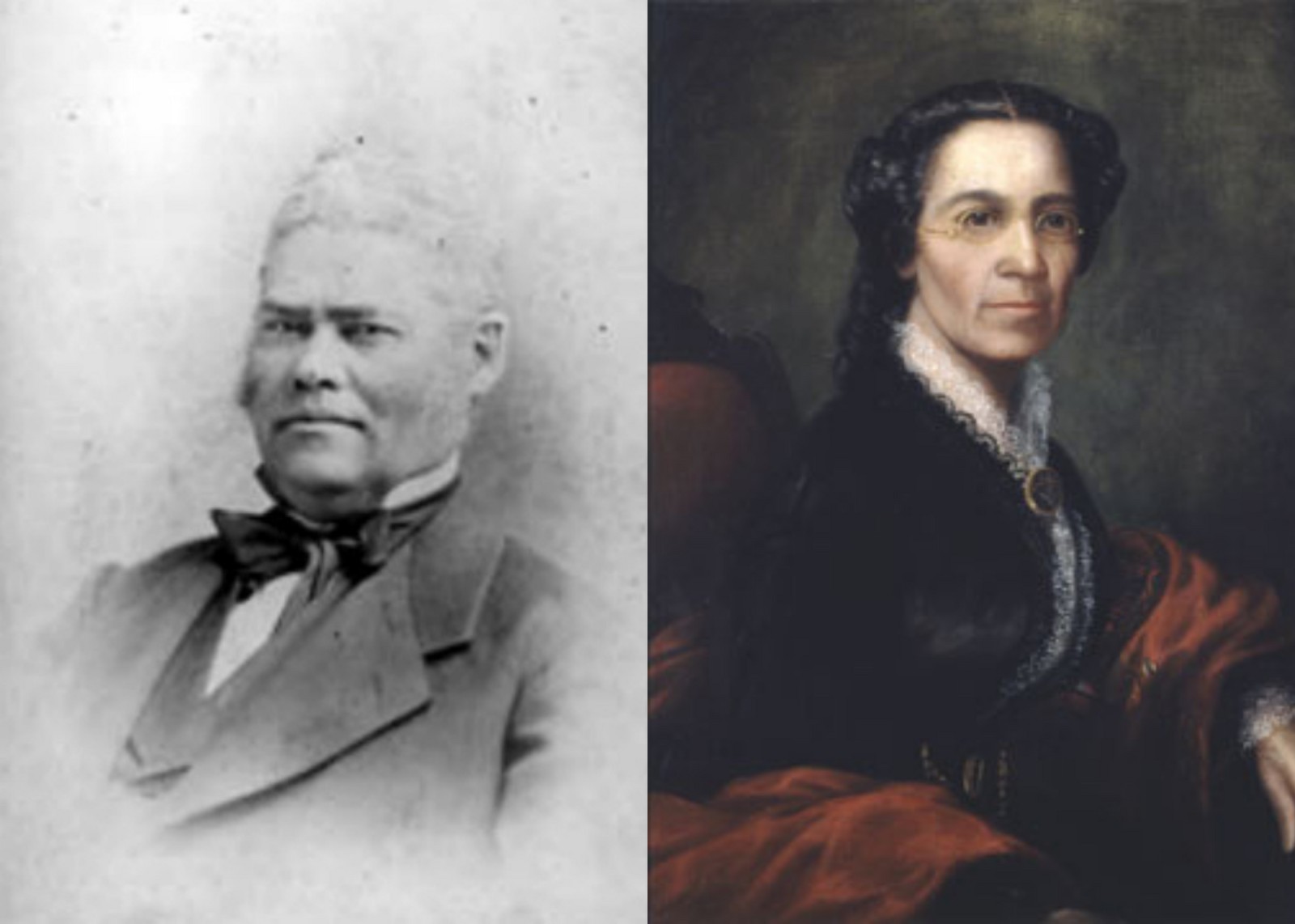
What’s that building? The forgotten footprints of activists John and Mary Jane Jones
They were one of Chicago’s first Black power couples, helping freedom-seeking Black people and fighting for voting rights in the 1800s.
By Dennis RodkinThe Loop no longer has physical sites you can still see from the Underground Railroad, but several locations served as important stops in the 1800s thanks to one couple.
John and Mary Jane Jones arrived in Chicago from downstate Alton on March 11, 1845, with their daughter, Lavinia. The Black couple left significant footprints in the city through their activism, but most of the buildings where they lived and worked are no longer standing. Some of the places were destroyed by the Chicago Fire in 1871, while others were demolished and replaced as the city grew.
The Joneses were one of Chicago’s first Black power couples, leading and supporting efforts to strike down the Black Laws, helping freedom-seeking Black people along the Underground Railroad and fighting to get Black people and women the right to vote. John served as a Cook County commissioner from 1871 through 1875 and left behind an estate that would have been worth at least $1.4 million today, or about $50,000 in 1879.
Here are the current locations in the city associated with the Joneses and their activism, mostly in the Loop:
Madison and Wells, northeast corner
Mary Jane Jones was 26 and John Jones was 29 when they arrived in Chicago, a city of 12,000 people, in 1845. They had $3.50, according to his obituary, the equivalent of $130 today. They rented a one-room cottage on the northeast corner of Madison and Fifth Avenue (now Wells Street), which is now a multistory parking garage.
Randolph and Clark, northwest corner

John Jones set up his tailoring business in a rented, 130-square-foot shop on or near the corner where the plaza in front of the James R. Thompson Center is now. He pawned his watch to buy two stoves to heat the shop and home.
Monadnock Building, 53 W. Jackson

Chicago’s oldest Black congregation, Quinn Chapel AME, was on this site in 1850, the year the Fugitive Slave Act was passed. The Quinn congregation was a center of opposition to the law, which required that people in free states help return fugitives to enslavement. John Jones was a leader in the opposition effort, setting up a “vigilance committee” that sponsored petitions calling for the law to be repealed. Quinn has been at 24th and Wabash since 1891. The Joneses were also involved in the founding of Olivet Baptist Church, which Christopher Reed, an emeritus history professor at Roosevelt University and author of the book Black Chicago’s First Century: 1833-1900, said was around the same location as Quinn pre-Fire. It’s now at 31st and King.
Washington and Dearborn/Madison and Dearborn, east side of the block

In the 1850s, the couple lived on Dearborn near Madison, and later on Dearborn closer to Washington, on property they owned, including their home and John’s shop, J. Jones Dresser & Repairer. The Joneses were among the first Black property owners in Chicago, though not the very first, Reed said.
John Jones was a “merchant tailor,” Reed emphasized. That is, he wasn’t simply altering men’s pants and jackets, he was making and maintaining them. According to ads Jones ran in the Tribune, he would also clean and repair “gents’ clothing.”
But much more than tailoring happened here. The Jones home was a stop on the Underground Railroad, according to John’s obituary and later comments from daughter Lavinia, who said her mother stood guard at the door whenever freedom-seekers were hiding inside.
Reed said the Jones tailoring shop was also the original Chicago recruitment station for Black men to join Union troops in the Civil War. At the time, Illinois wasn’t enlisting Black men, but the 54th Massachusetts Infantry Regiment (the subject of the 1989 movie Glory) was recruiting all over the nation. According to Reed, Martin Robison Delany used the tailoring shop as his base for recruiting in Chicago before Illinois created the 29th U.S. Colored Infantry Regiment in 1864.
Northeast baseball diamond at Dunbar high school, at roughly the center of the school’s 3000 S. King Drive campus

After suffering with kidney disease for a few years, John Jones died May 21, 1879, at the couple’s home at 43 Ray Avenue. Research by the Cook County clerk and Reed places the former site of the home at a baseball diamond on the campus of Dunbar Vocational Career Academy. It’s the northeast diamond behind the school, reached by walking through Dunbar Park.

The Tribune eulogized him as “so exceptional, a man of such natural ability and strength of character. He is an instance of a man who, belonging to a despised and proscribed race [who] work[ed] his way up to be prominent among his people, a respected member of the community.” The funeral, held at the house, marked the end, according to the Tribune, of “this eminent colored citizen’s career, the good he has done the race,” and the 700 mourners who participated showed “the esteem in which he was held, not only by the colored people of this city, but by the white folks.”
John was buried at Graceland Cemetery.
Mary Jane lived another 30 years, continuing her activism by working with Ida B. Wells, Susan B. Anthony, Jane Addams and others in the suffrage and settlement house movements. She was buried next to her husband when she died.
Dennis Rodkin is the residential real estate reporter for Crain’s Chicago Business and Reset’s “What’s That Building?” contributor. Follow him @Dennis_Rodkin.
Vashon Jordan Jr. is the freelance photojournalist for Reset’s “What’s That Building?” Follow him @vashon_photo.

